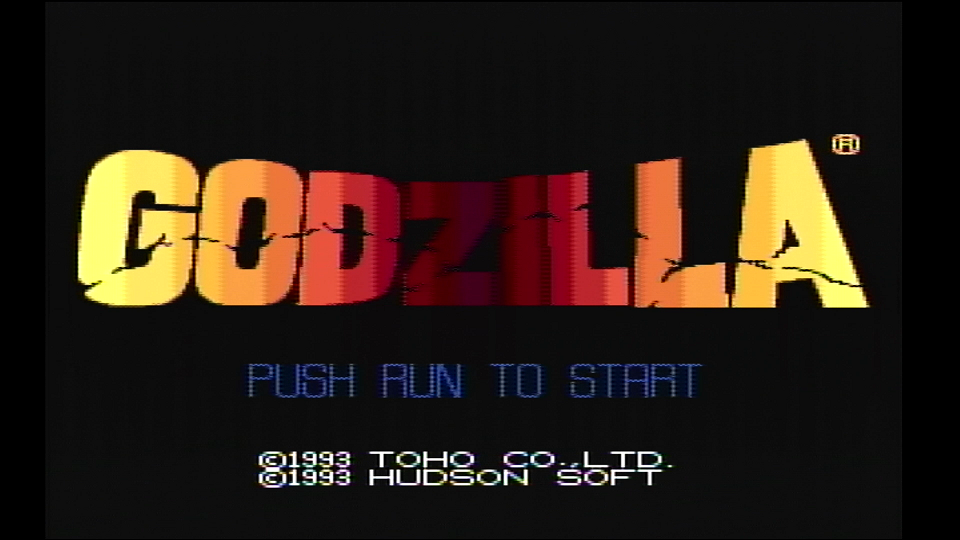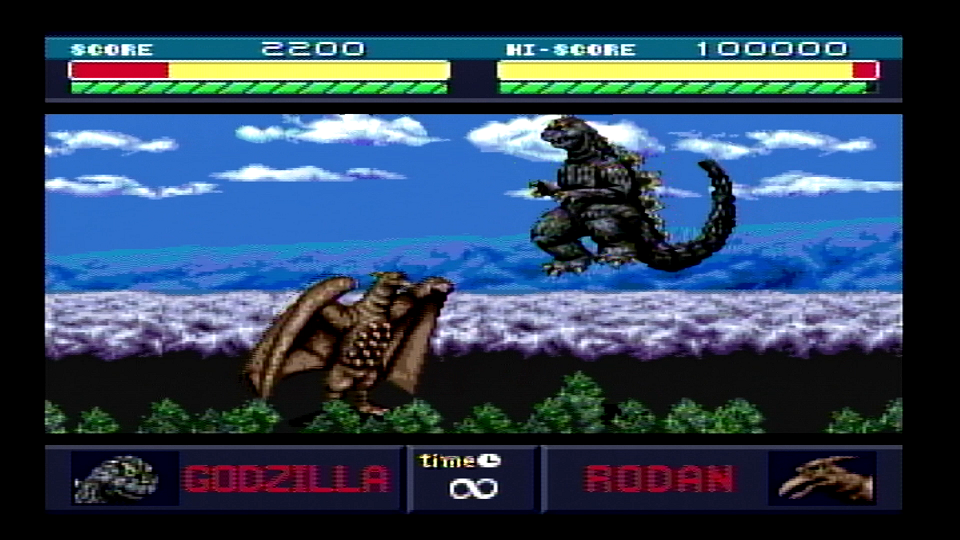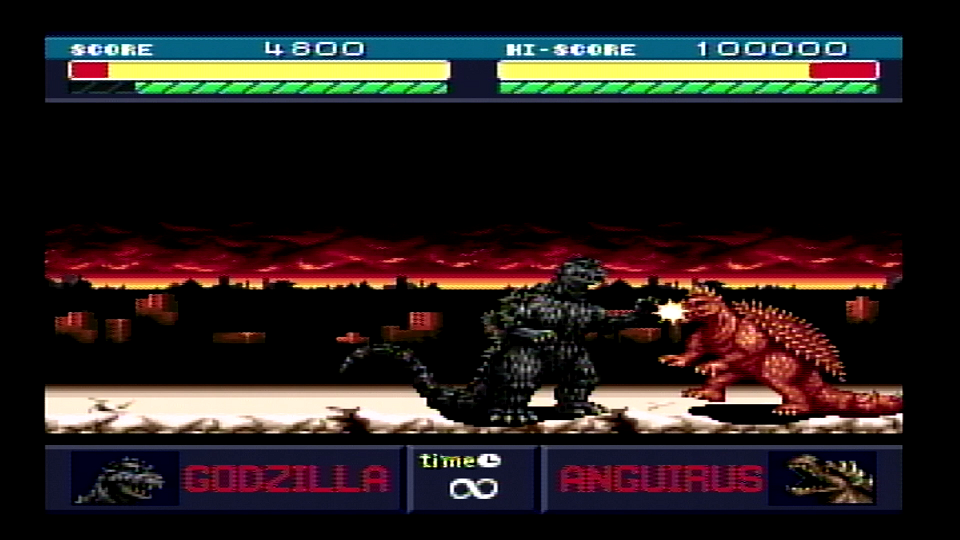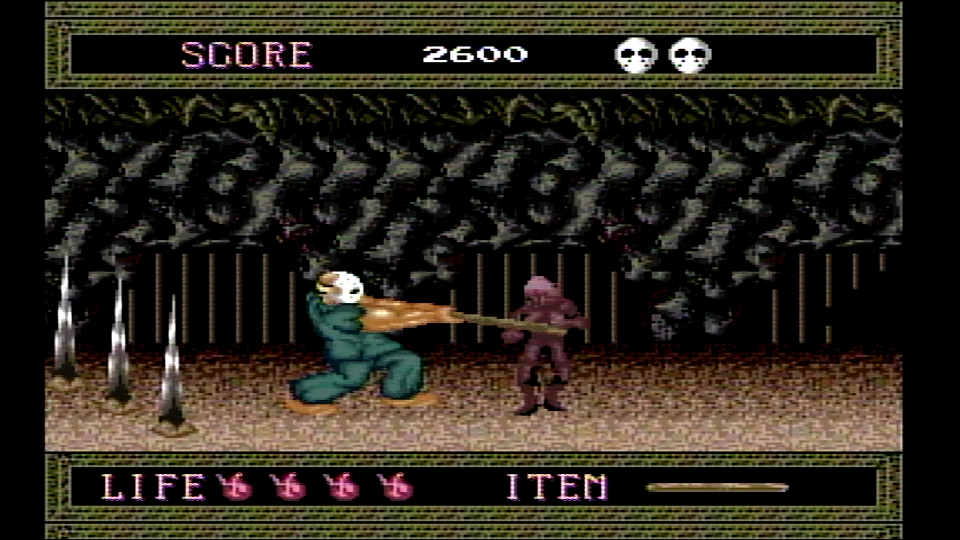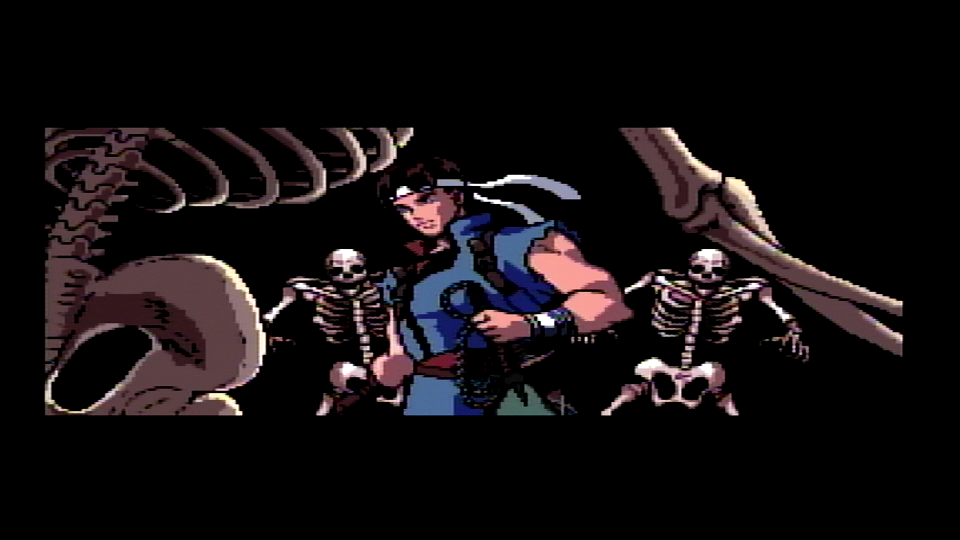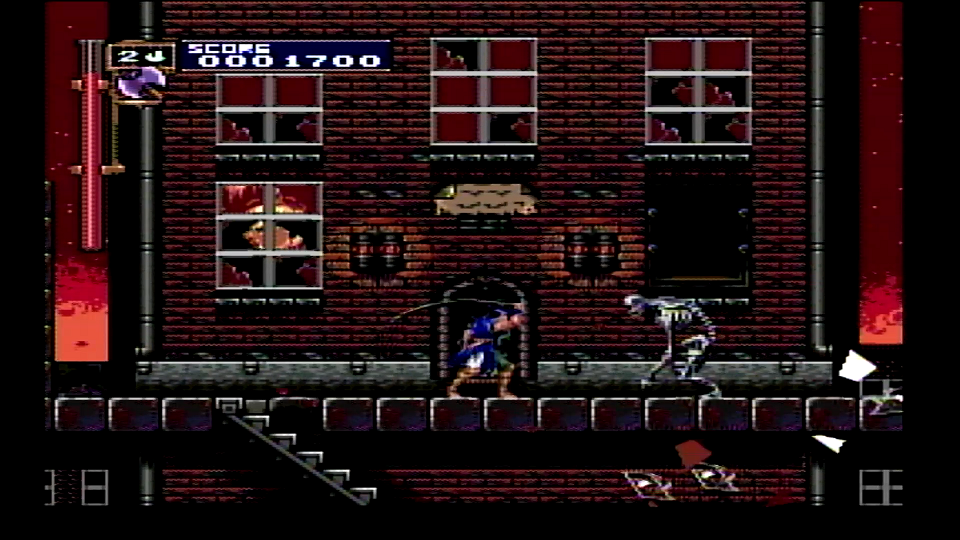Video Game Blog 035: Retro Corner #1
As my birthday approached this year, my wonderful wife Cocoashade started dropping hints about a big gift she’d gotten me. As it turned out, she ended up giving it to me three weeks early because she was too excited to wait. The main portion of the gift came in a box wrapped in Japanese newspapers (and with a pair of chopsticks for no reason I could discern) and other accessories came over the course of the next two weeks.
My newest console!
She had gotten me a Japanese gaming console that I had never heard of before, the Duo-R! She’d rightly assumed that I would want to write about it, so one of those hints she dropped was to plan for some extra blogging time in the next year. The other items I received were a second controller, a plug-in to allow multiple controllers, a bunch of CDs, and a cartridge with a full library of games to try out.
I immediately made room for it in my gaming setup and tried out some of the games I’d gotten. I knew right away that this would be a new series on the video game section and it wasn’t long at all before I zeroed in on the first five games I wanted to talk about. This post will cover three of them.
Menu screen.
What exactly is the Duo-R? This was a system released in 1993 as a combination of the PC Engine and Super CD-ROM². As such, it has the ability to play both CDs and cartridges. The PC Engine was a Japanese system that is known in North America as the Turbografx-16. The Turbografx-16 is notable for being the first 16-bit console released, beating the Sega Genesis by one year and the Super Nintendo by three years.
And so, with the video game history lesson out of the way, let’s get to three of the games I’ve played since getting this system!
Title screen. (Credit: Toho, Alfa System)
Godzilla: Battle Legends is a fighting game that was developed by Alpha System (Hudson Soft in America) in 1993 for the Turbo Duo.
So far I’ve only seen 3… (Credit: Toho, Alfa System)
A fighting game with kaiju? You know this was the first game I tracked down. I was thrilled when I found this game… I’ve heard of it in the past, whispered about by Godzilla fans in hushed tones. It’s understandably hard to find nowadays, which adds to its notoriety.
There are 16 monsters included in the game (this number includes Godzilla himself, three versions of King Ghidora, two of Battra, and three Mechagodzillas.) So far I can’t win a single battle, so I have only seen the opening choices of Anguirus and Rodan. The other monsters are Super X, Biollante, Hedorah, and Megalon. A 1-player game only has access to Godzilla as a playable character, but there is an option to play 2-player VS.
I never pass up an opportunity to beat on Rodan. (Credit: Toho, Alfa System)
This game plays as most fighting games of the era. You can jump, punch, rush at your foe, whip them with your tail. And with specific button combinations you can fire your atomic breath or grapple and bite. The game opens on a map and you can choose your enemy, but only two are available at the start.
I do the best against Anguirus so far. The latest time I almost beat him was when I accidentally stumbled on the button combination to grapple him and chomp on his head. Then I got him in a corner and smacked him four times before he could get away and deplete the rest of my health. I got him down to a quarter bar of life. I haven’t gotten even that close with Rodan yet, but I haven’t tried him as often.
Godzilla, use Tail Whip! (Credit: Toho, Alfa System)
Graphics: The graphics on this are really cool, especially considering how old the game is. The detail I really liked was that Godzilla changes his appearance depending on which monster he’s fighting and what movie era he first faced them in. For instance, he’s the 50s Godzilla while fighting Anguirus and 60s Godzilla while facing Rodan. Godzilla actually has 10 different character models in this game.
Music & SFX: The music is subdued and unobtrusive, but in the opening they do have the standard Godzilla theme song, which is always good to hear. The sound effects are fantastic. All the monsters have their correct roars and they make satisfying noises when you hit them.
Gameplay: The controls are as clunky and unresponsive as you would expect from an old fighting game. However, the movements are smooth, and the experience fun overall.
Challenge: This game is HARD, y’all! I can’t even beat Anguirus or Rodan on Easy mode. The closest I came was in the screenshot above where I somehow managed to get off an atomic blast and whipped him with my tail. (I can no longer remember how to do either move.) I need to learn the moves and practice more.
Boop the nose. (Credit: Toho, Alfa System)
Thoughts: I really like this game. The controls are clunky and I still haven’t learned how to do all the moves consistently, but I’m getting better slowly. I really want to get better at this game so I can see all the different monsters and Godzilla forms. It gets frustrating dying over and over, but I do keep coming back to it to try again after a good rest.
Title screen. (Credit: Namco)
The second game I looked for is one I saw an ad for in a comic book, coincidentally the day after I was gifted the system! Right there in an old issue of Alpha Flight was the following bit of retro goodness…
I love this. (Credit: Namco)
Splatterhouse was released in 1998 by Namco (Namcot in Japan) for the Turbografx-16. It is a side-scrolling beat-em-up game that takes inspiration from western horror films like Friday the 13th, Evil Dead, and more. The main character is named Rick, who awakens wearing the Hell Mask (which looks oddly like a certain hockey mask…) which has transformed him into a superhuman monster. He must fight his way through a spooky manor to save his girlfriend Jennifer from the experiments of the evil Doctor West.
Punchy. (Credit: Namco)
You proceed from left to right through the levels, fighting enemies. You can punch, jump, and kick. There are pickups to help, such as a wooden board that extends your reach, or a knife you can fling at enemies.
Whack you with my beatstick. (Credit: Namco)
You walk through the levels, defeating monsters and avoiding traps. There are spikes that pop up from the floor, corpses vomit acid at you, and new monsters pop up unexpectedly to mess up your rhythm. Usually you scroll as you move, but in some areas, it scrolls automatically. The only break from the left to right progression is when you encounter ladders or holes in the ground to proceed to the next area. If you run out of health, you continue from the beginning of your most recent area.
Blaaargh. (Credit: Namco)
At the end of each stage is a boss battle that plays out like many older games— you have to learn the pattern and counterattack when it’s safe.
Oh good, a water level. (Credit: Namco)
Graphics: The graphics are suitably monstrous. I really like the designs of the monsters and the bosses. I love that the health is represented by actual human hearts. It’s the details that make the game.
Music & SFX: The music is low-key and bland. The sound effects are cool, though.
Gameplay: The controls are responsive. Being a lumpy monster, your character is not very agile, but you can easily get used to how he moves. The jumps are pretty easy to time to get over obstacles.
Challenge: The first stage is super easy, as long as you don’t rush and step in the acidic vomit. It gets tougher in the water portion of Stage 2. Man, those spiky obstacles keep messing me up and after you dodge them you have to make sure to be in the center of the screen because monsters start surfacing on either side. I lose a lot of health in the water, and typically lose my board too.
This house needs cleaning. (Credit: Namco)
Thoughts: This game is pretty basic, but it’s fun. This will probably be the first one I manage to beat, since there are only seven levels and I’ve easily been able to reach the end of Stage 2. I just have to get back into that retro frame of mind and let the monsters come to me. Rushing through always gets me in trouble.
Title screen (Credit: Konami)
The third and final game of this post is one that I kept seeing posted on recommended games lists for the system. Akumajō Dracula X: Chi no Rondo (Castlevania: Rondo of Blood) was developed by Konami for the PC Engine's Super CD-ROM² and was released in 1993. It was later remade for Super Nintendo and PlayStation Portable. This was the tenth installment in the franchise and Castlevania: Symphony of the Night is the sequel to this game.
Ooh anime cinematics. (Credit: Konami)
Rondo of Blood follows Richter Belmont on his quest to save his lover Annette who was taken by Dracula. This game checks all the boxes for a Castlevania game… a Belmont with a whip, Dracula, spooky locations and monsters, and frantic platforming. There is also a second playable character you can unlock, Maria Renard. (I haven’t gotten that far yet.)
He leaves the horsies behind so they won’t get hurt. (Credit: Konami)
The game is played across nine stages. The basic gameplay is: hit monsters with whip. But there are also secondary weapons and a special power move you can do with them. (I haven’t figured out how to do that yet.) There are bosses and sub-bosses, a variety of enemies to fight, and even alternate routes to find to change the path of the game.
Is a skelly-guy. (Credit: Konami)
I had a blast with this one. Castlevania is a series that I very much enjoyed when I was younger. Especially Parts 2 and 4, but 1 and 3 were fun too. I’m way behind in my Castlevania playing… Part IV on the Super Nintendo was the last one I finished. (I played just a little of Castlevania 64 before getting distracted.) But I have this game now and a whole collection on the Switch, so someday I’ll delve more into the series.
Big ol’ rock dude. (Credit: Konami)
Graphics: This one was a huge upgrade to the older games I’ve played in the series. Buildings are on fire, monsters burst out of the environment. The birds explode into feathers when you whip them, Richter explodes into blood when he dies. Love it.
Music & SFX: The music is classic 16-bit style. Nothing ground-breaking, but it fits the game and enhances the mood. The sound effects fit perfectly as well.
Gameplay: The controls are smooth and responsive. The whip has a long reach, but cannot be swung upwards or diagonal like in some of the games. It also can’t be upgraded and starts at its longest reach. Registering your name allows you to save your progress and pick up at the beginning of the stage you left off on.
Challenge: This game is pretty challenging. You have to pay close attention to the monsters and react fast. Man… I forgot how horrible the crows could be on these games. (Little shits.) Once you learn the patterns for the monsters and bosses, you’ve got it made. (Except for the crows. They’re unpredictable.)
Oh look! It’s a… thing. (Credit: Konami)
Thoughts: I’m having a blast with this game. So far I’ve only made it to Stage 2, but I’m determined to finish it. This one really brought me back to playing the original game, trying desperately to reach the end before the monsters got the better of me, dreading the boss that was surely waiting for me before I could move on to the next stage. I’m excited to see what the second character is like and face up against Dracula. The fact that it saves my progress will make it much more likely that I will finish the game.
Choose your kaiju. (Credit: Toho, Alfa System)
My thoughts and first impressions on the Duo-R are that this is a very solid system and a good way to play games I missed from my younger days. I’ve already gotten a lot of enjoyment out of it and I’m just getting started. This was a very thoughtful gift and it’s going to bring me years of fun and content.
These games, old as they are, are no joke. They have a high level of difficulty even on Easy mode. It’s not just because of the wonky primitive controls, either. The games are designed to challenge you. To keep throwing new things at you so that you are forced to keep getting better. You have to learn patterns and remember them. You have to react at a split second and change your strategy when the game once again changes. These games are fun, frustrating, and difficult. I’m going to keep coming back to them because I want to master them.
And to show you a bit of the difficulty, I leave you with a montage of some of my many, many deaths.
Thank you for reading the first installment of Retro Corner! I hope you enjoyed it as much as I did. This will be an ongoing series over the next few years as I continue to accumulate and try new games for the Duo-R. I’m excited to start this new journey into retro gaming and I hope you will continue to join me for it! Thank you for reading, you are appreciated, and I’ll see you soon with more! (Sooner than you might think, actually! Part 2 is coming in two days!)
I see this screen so often. (Credit: Toho, Alfa System)




